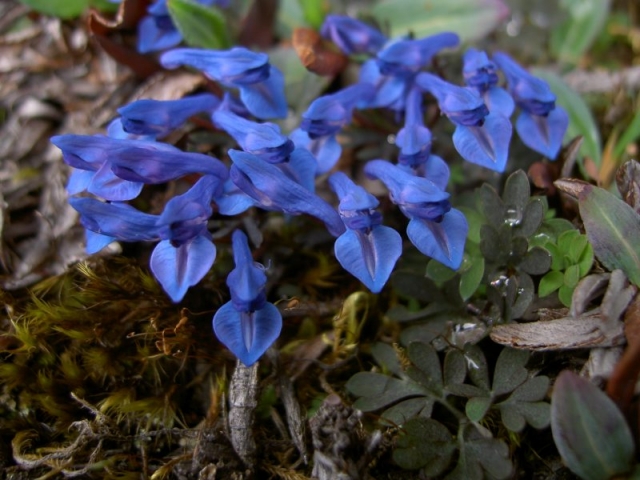 |
| How to grow Corydalis cashmeriana |
Although difficult to grow in the milder regions of the United Kingdom, Corydalis cashmeriana is arguably the most attractive of all the species and cultivars within this genus. Native to Kashmir, the northernmost geographical region of the Indian subcontinent, it is a gorgeous hardy perennial noted for its comparatively large, salvia-blue blooms and is particularly suitable for rock gardens or alpine houses. For those of you who care about such things the species name Corydalis is derived from the Greek meaning 'crested lark'.
Under favourable conditions you can expect Corydalis cashmeriana to reach a height of 15 cm high and a spread of 25 cm. The dissected blue-green leaves are 3-lobed and biternate. The brilliant clear-blue blooms are approximately 1-2 cm long and appear from May to August on racemes 5-8 cm long
In its native habitat Corydalis cashmeriana is usually found in open screes and scrub in an acidic, well-drained humus-rich soil. Under cultivation it require cool, humid conditions which makes it difficult to keep in the milder weather experienced in the south of England.
As you would expect, it will perform best in full sun planted in cool, humus-rich lime-free soil. Experience has shown that Corydalis cashmeriana will perform better outside in western Scotland than anywhere else in the UK. Avoid planting near deciduous plants as any leaf drop on corydalis can cause them to rot off. Remove any leaves that fall on the foliage as soon as possible.
The soil within its natural habitat will be generally poor, but a monthly feed of 50% of the recommended dose of liquid soluble fertiliser will be fine.
In England Corydalis cashmeriana is best cultivated in an alpine house in 15-20 cm terracotta pans of John Innes compost 'No.1'. Keep the soil just on the moist side over winter and avoid water-logging as this can increase the incidence of root rots. Re-pot annually in March, but avoid disturbing the root system as much as possible.
For related articles click onto the following links:
HOW TO GROW CORYDALIS CASHMERIANA
HOW TO GROW CORYDALIS LUTEA
HOW TO GROW CORYDALIS SOLIDA
HOW TO GROW PHYSOPLEXIS COMOSA FROM SEED







No comments:
Post a Comment